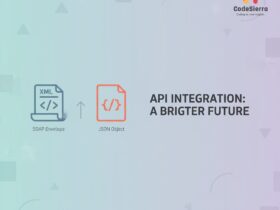Introduction
Data interchange formats are essential for APIs, configuration files, and system integrations. JSON and XML are two of the most commonly used data formats. This post compares JSON vs XML, highlighting differences, advantages, disadvantages, and practical use cases to help developers choose the right format.
What is JSON?
JSON (JavaScript Object Notation) is a lightweight, human-readable data interchange format based on JavaScript object syntax. It represents structured data using arrays, objects (key-value pairs), strings, numbers, booleans, and null.
What is XML?
XML (eXtensible Markup Language) is a markup language designed to store and transport data. It uses nested tags, attributes, and a document tree structure. XML is highly extensible and supports schemas (XSD), namespaces, and validation.
Key Differences
Below are direct differences between JSON and XML across common dimensions:
Syntax and Readability
JSON: Uses braces, brackets, and simple syntax. Easier to read and write for developers, especially in JavaScript-centric environments.
XML: Uses opening/closing tags and attributes. Verbose and more verbose structure which can be harder to read compared to JSON.
Data Types
JSON: Supports native data types — string, number, boolean, null, array, object.
XML: Primarily text-based. Data types are not native; they require schemas (XSD) to enforce types.
Schema and Validation
JSON: JSON Schema exists but is less mature compared to XML Schema. Validation is possible but less standardized.
XML: Robust validation with XSD, DTD, and namespaces. Better suited for scenarios where strict validation and document structure are required.
Extensibility and Metadata
JSON: Less suited for metadata-heavy representations. Attributes need to be represented as keys.
XML: Supports attributes and nested elements naturally, making it better for MIME-like or metadata-rich documents.
Parsing and Performance
JSON: Faster to parse in most environments — native support in JavaScript and wide support in other languages. Smaller payloads due to less verbosity.
XML: Parsing is generally slower and more memory-intensive, especially with DOM-style parsers. Streaming parsers (SAX, StAX) mitigate memory issues but add complexity.
Namespaces
JSON: No built-in namespace mechanism. Developers implement custom conventions when required.
XML: Native namespace support allowing multiple vocabularies within the same document — useful for complex integrations.
Tooling and Ecosystem
JSON: Excellent tooling for web/mobile APIs (REST), JavaScript frameworks, and modern microservices.
XML: Strong tooling in enterprise ecosystems, document-centric workflows, SOAP-based web services, and legacy systems.
Use Cases
Choose JSON when:
- Building RESTful APIs for web and mobile.
- You need lightweight payloads and fast parsing.
- Your stack is JavaScript-heavy.
- Interchanging data between microservices.
Choose XML when:
- Working with document-centric data requiring complex metadata.
- Integrating with legacy enterprise systems or SOAP-based services.
- Strict schema validation and namespaces are essential.
- Using technologies that rely on XML (e.g., XSLT transformations).
Examples
JSON example:
{
"employee": {
"id": 101,
"name": "Jane Doe",
"active": true,
"roles": ["Developer","Admin"]
}
}
XML example:
<employee>
<id>101</id>
<name>Jane Doe</name>
<active>true</active>
<roles>
<role>Developer</role>
<role>Admin</role>
</roles>
</employee>
Conclusion
Both JSON and XML have their strengths. JSON is the preferred choice for modern web APIs and services due to its simplicity and performance. XML remains relevant for enterprise environments where validation, namespaces, and document workflows are critical. Choose based on requirements: payload size, validation needs, compatibility, and ecosystem tooling.
Further Reading
Learn more about JSON Schema, XML Schema (XSD), REST vs SOAP, and parsing libraries available in your preferred programming language.










Leave a Reply